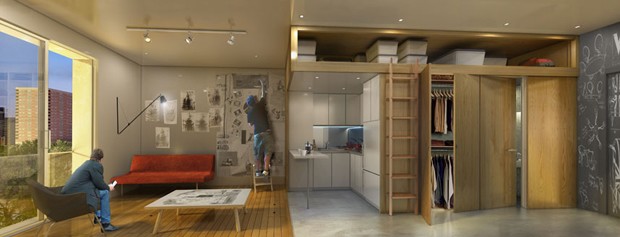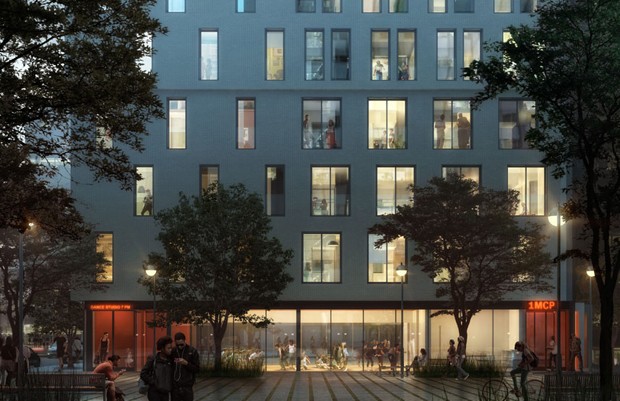While architects in Melbourne figure out ways to revolutionise apartment living, a New York practice is ready to stack its modular micro housing development high this year, by-passing certain zoning regulations for its Kips Bay site along the way.
My Micro NY is designed by nARCHITECTS in collaboration with Monadnock Development, and was named winner of the adAPT NYC competition sponsored by the New York City (NYC) Department of Housing Preservation & Development (HPD).
The development is the city’s latest to join the micro apartment trend, whereby living areas are consolidated to save space and offer multiple functions. It focuses on quality and liveability through features that highlight the use of space, light and air, “such as 9'-10" floor-to-ceiling heights and juliet balconies”.


Utilising only modular building construction, which would shorten the project schedule and save on financing and conventional construction costs, the 250 to 370 square-foot (24-33sqm) micro-units achieve affordability for low- and middle-income households without any direct City subsidy or financing.
“By incorporating setbacks as a governing design logic, My Micro NY could in principle be adapted to many sites, at a range of heights and floor area ratios, and at nearly any location in a block,” said nARCHITECTS.

Although NYC’s housing codes currently do not allow an entire building of micro-units to be built (zoning and density rules limit apartments to no less than 400 square feet), the regulations were specially waived by New York City (NYC) Mayor Michael Bloomberg for the My Micro NY pilot project, which will house its first occupants by the end of the year.
The adAPT NYC competition was created as part of Mayor Bloomberg's New Housing Marketplace Plan to introduce additional and affordable choices within the housing market to accommodate the city's growing population of one- and two-person households.
It is hoped that city’s first micro-apartments, to be prefabricated in Brooklyn, would pave the way for similar developments that would eventually bring rent prices down across the city.
Images: nARCHITECTS

